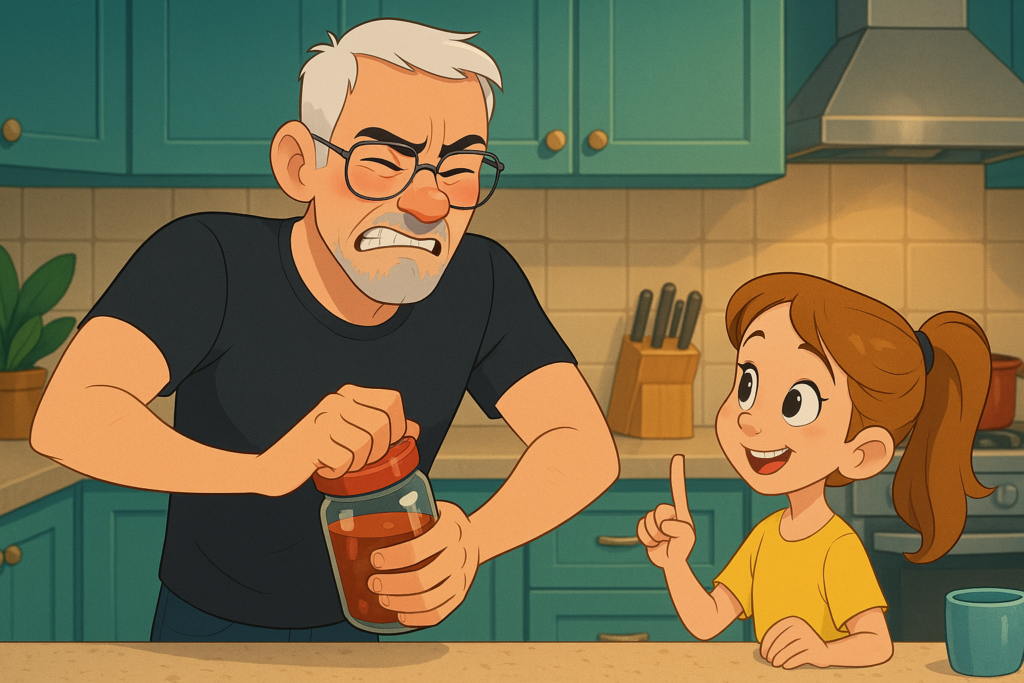
I’m standing in my kitchen last weekend, attempting to open a stubborn jar of home-canned pickles.
After the usual routine — tap the lid, run it under hot water, grip with a dish towel.
Still struggling.
My daughter walks in, sees me fighting with this ridiculous jar, and says:
“Dad, we have that jar opener thing, remember?”
One twist with the gadget and the lid pops off effortlessly.
“Finally!” I exclaim, feeling oddly victorious.
That spontaneous “finally” captures something powerful. Not just opening a jar, but really about resolving a recurring frustration I’d been tolerating for years.
This is why “finally” might be the most underrated word in product marketing.
News Flash: the biggest obstacle any innovative product faces isn’t a competing product.
It’s the status quo.
Human brains are hardwired to stick with what’s familiar, even when it’s mildly uncomfortable or inefficient. Psychologists call this status quo bias, and it’s remarkably difficult to overcome.
In I Need That, I devote an entire chapter to this phenomenon. Our brains cling desperately to established patterns, and the pain of changing often feels worse than the pain of the problem itself.
“Finally” cuts through this resistance in a fascinating way. It acknowledges three critical things simultaneously:
- People have been suffering with this problem for too long
- They’ve actively sought solutions but found none satisfactory
- The wait is over—resolution has arrived
This psychological cocktail creates what Tversky and Kahneman identified as “anticipated regret” — the fear of missing out on something that resolves a long-standing pain.
It transforms inertia into urgency.
When Apple launched the iPad with “Finally, the internet in your hands,” they were onto something. They were naming a collective frustration with clunky mobile browsing experiences that people had been begrudgingly tolerating.
Phones were too small to be optimally effective. A laptop was too big. This was just right for many tasks.
Gillette Venus did the same with “Finally, a razor just for women,” positioning the product not as a new option but as the resolution to decades of women awkwardly using pink-washed products designed for men’s faces.
The pattern repeats with impressive consistency:
Volkswagen Beetle: “Finally in your size”
Heinz upside-down ketchup: “Finally, ketchup catches up”
Amazon Prime: “Finally, shopping made simple”
Tide Pods: “Finally, laundry made simple”
Each example works because it frames the status quo as the enemy, not the competitor.
It creates a narrative where your product is the hero, finally arriving to slay a dragon people have been living with for far too long.
Product Payoff: Uber masterfully deployed this technique with its early messaging: “Finally, a ride when you need one.” This positioned taxis not as competitors, but as a broken status quo that people had been suffering through. The message framed the traditional taxi experience — waiting on street corners, dealing with surly drivers, fumbling for cash — as an unnecessary pain that people had simply been enduring without realizing there could be an alternative. This framing helped turn Uber from a weird new service into a mainstream necessity in just a few years.
Action for today: Look at your current marketing messages and identify where you’re positioning yourself against competitors instead of against the status quo. Rewrite one key message using “finally” to position your product as the resolution to a long-standing frustration.
Focus on the meaningful life change you deliver, not the features you’re offering.
Have you used “finally” in your own product messaging? Or fallen for its pull as a consumer?
Tap that reply arrow and share your experience. The wait is killing me!
Or reach out to my amazing team of product marketing specialists at Graphos Product.
